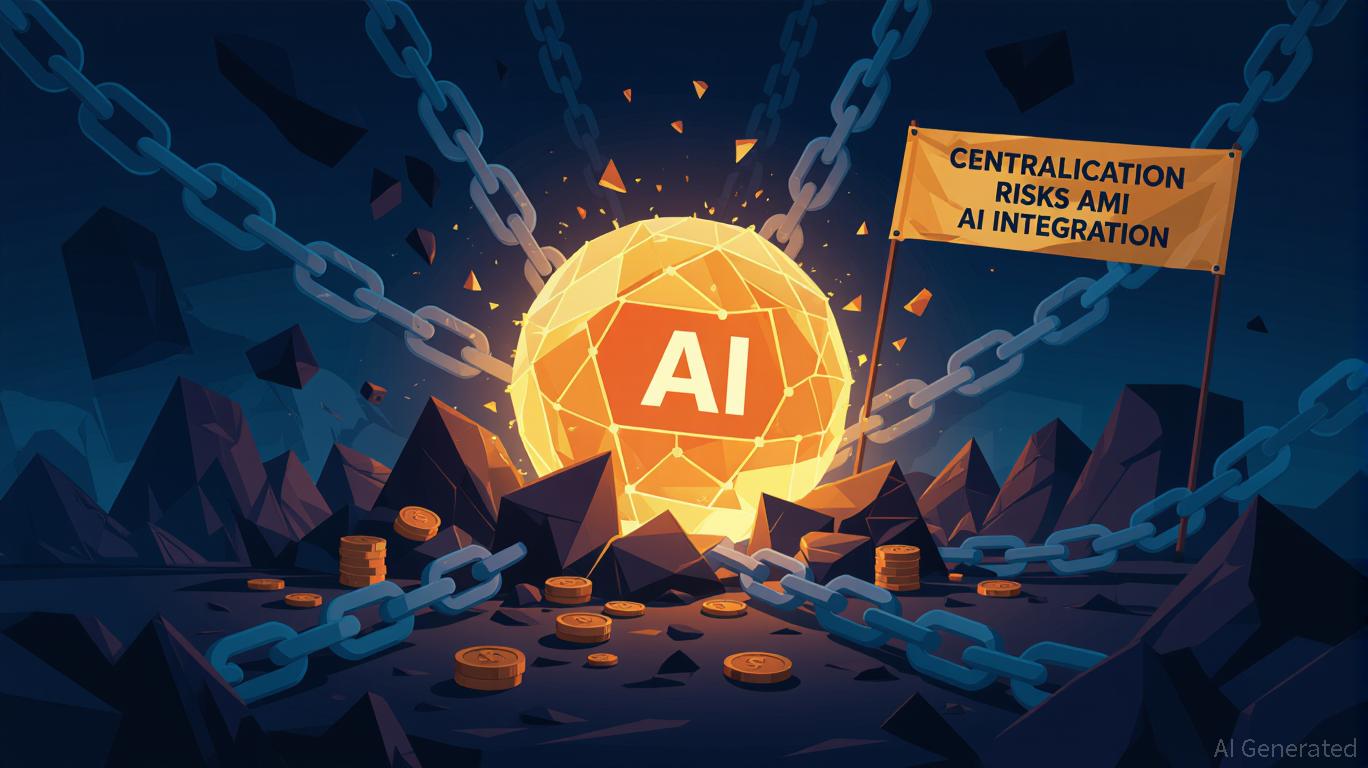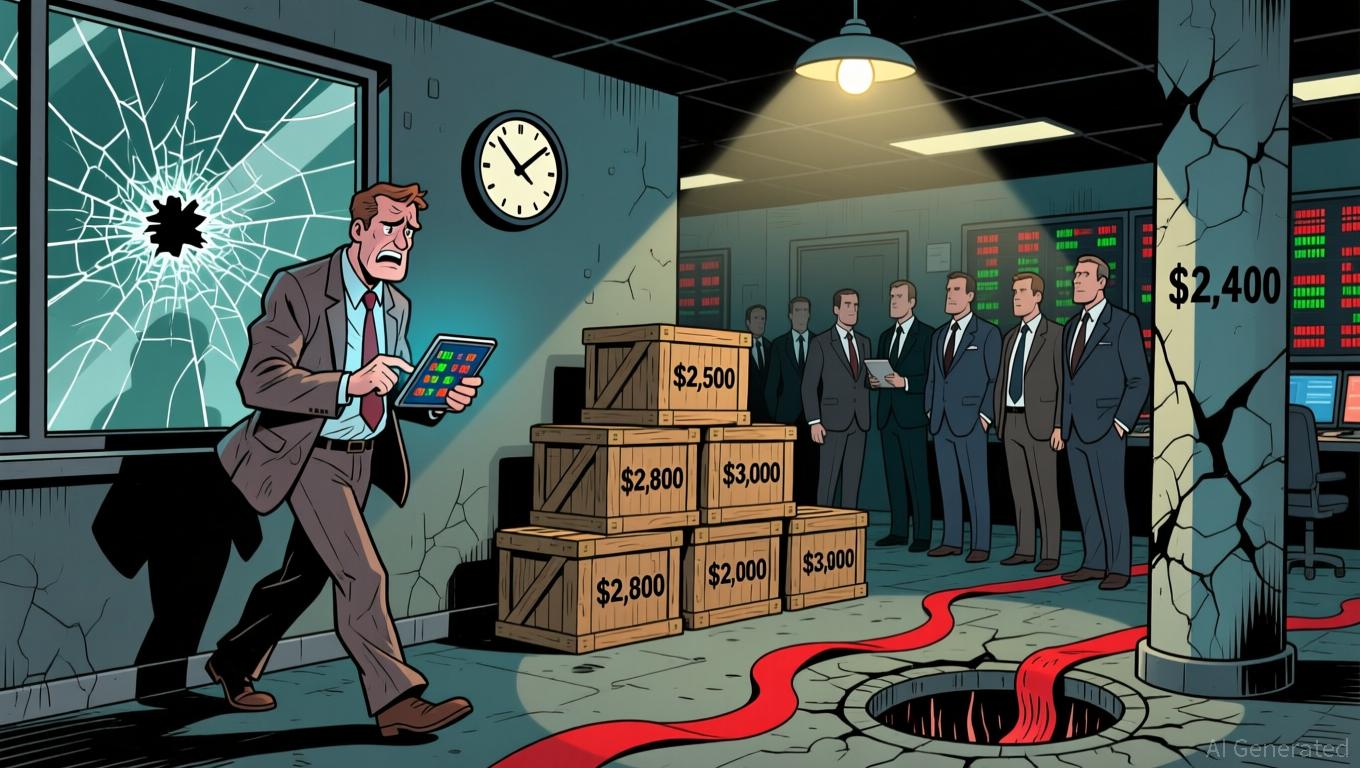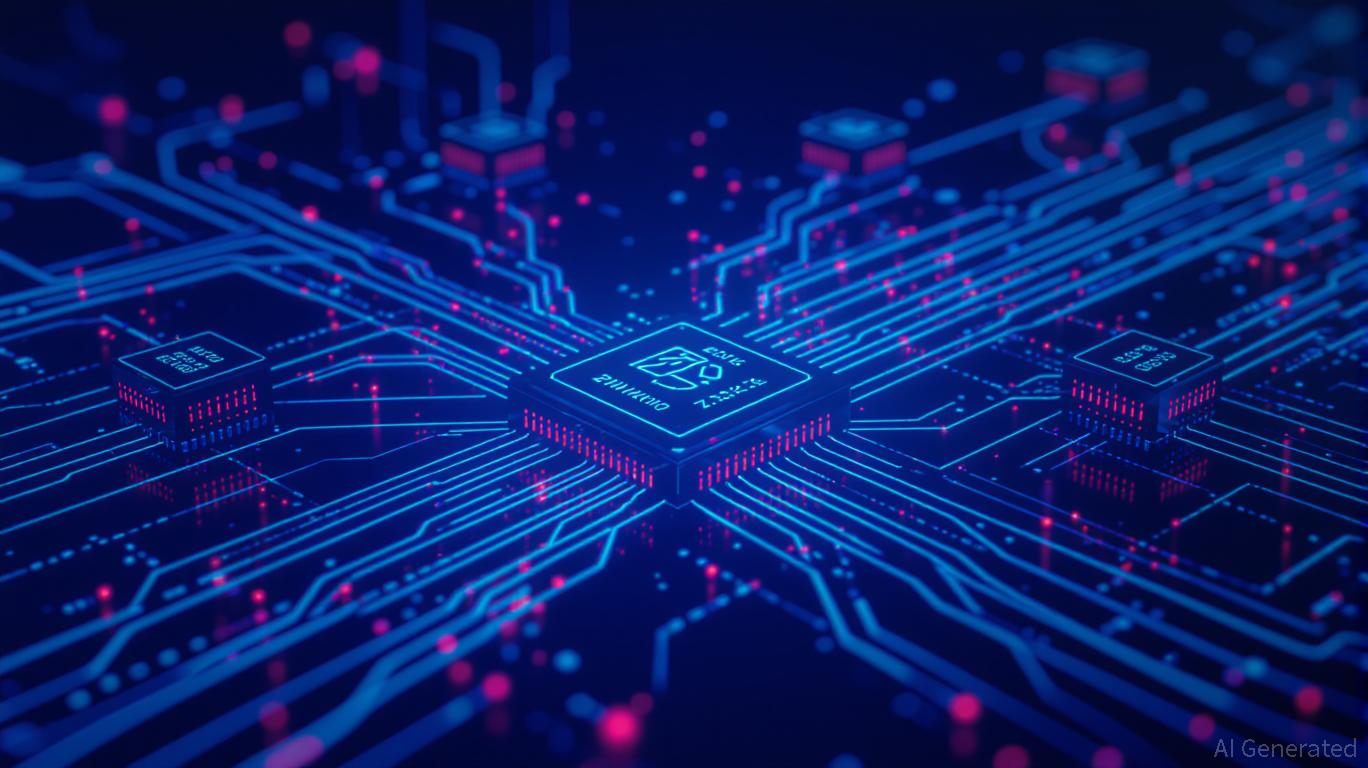The ChainOpera AI Token Collapse: A Warning Story for Investors in AI-Based Cryptocurrencies
- ChainOpera AI token's 96% collapse in 2025 highlights systemic risks in AI-integrated blockchain ecosystems. - Centralized governance (87.9% controlled by ten wallets) triggered liquidity crises and panic selling. - AI technical flaws destabilized algorithmic stablecoins, exposing vulnerabilities in "black box" models and data integrity. - Regulatory ambiguities (CLARITY/GENIUS Acts) eroded investor confidence as compliance demands surged by 37%. - Academic frameworks (VOPPA, NIST) and decentralized AI i
Lessons from the ChainOpera AI (COAI) Token Collapse
The dramatic downfall of the ChainOpera AI (COAI) token in late 2025—marked by a staggering 96% drop in value—stands as a powerful cautionary tale for those investing in AI-powered blockchain platforms. This incident exposes persistent weaknesses in areas such as algorithmic management, technical reliability, and regulatory adherence, which continue to challenge many AI-centric cryptocurrency ventures. By examining the COAI debacle alongside broader research and market trends, this analysis reveals essential risks and practical strategies for investors navigating the rapidly evolving landscape where artificial intelligence meets decentralized finance (DeFi).
Governance Centralization and Liquidity Challenges
One of the primary factors behind COAI’s collapse was its highly centralized governance. Reports indicate that just ten wallets held nearly 88% of the token’s total supply, undermining the foundational principle of decentralization in DeFi. This concentration of control not only diminished community trust but also left the project ill-equipped to handle liquidity emergencies. When AI-driven algorithms malfunctioned, the absence of distributed decision-making intensified panic selling, creating a vicious cycle. This scenario echoes concerns raised in academic circles, where hybrid governance models in AI-blockchain projects often struggle to balance operational efficiency with accountability.
Technical Shortcomings in AI Integration
COAI’s technical framework revealed significant vulnerabilities in its AI components. In the third quarter of 2025, there was a notable 270% increase in AI-related incidents, including the use of opaque "black box" models and algorithmic mistakes. These issues destabilized algorithmic stablecoins such as xUSD and deUSD, as the AI systems failed to maintain their value during market turbulence. Research published in the Web of Science highlights that AI models are prone to biases, security breaches, and data manipulation—risks that are particularly acute in open innovation environments.
Regulatory Uncertainty and Its Impact on Trust
Ambiguities in the regulatory landscape also played a significant role in undermining COAI. Legislative measures like the U.S. CLARITY Act and the 2025 GENIUS Act introduced uncertainties that shook investor confidence, especially as AI-driven projects struggled to keep pace with shifting compliance requirements. This situation reflects a broader industry challenge: AI-blockchain initiatives must operate within a fragmented and rapidly changing global regulatory environment, where oversight often lags behind technological innovation. Recent market analyses show that organizations are now dedicating substantially more resources to managing AI-related risks than they did in 2024, highlighting the growing complexity of compliance.

Scholarly Perspectives on Algorithmic Oversight
Academic research has proposed several frameworks to address these systemic issues. For example, the VOPPA model advocates for greater decentralization and enhanced fault tolerance in AI governance. Additionally, standards such as the NIST AI Risk Management Framework and ISO/IEC 42001 emphasize the importance of transparent and robust governance policies to counteract algorithmic bias and manipulation. These insights suggest that investors should favor projects with open, auditable AI systems and decentralized management structures.
Shifting Market Approaches to Risk Management
The fallout from COAI has accelerated the adoption of advanced risk management strategies centered around AI. New solutions, including blockchain-supported AI infrastructures, are being developed to improve data reliability and transparency. For instance, riskAIchain—a cutting-edge IT platform—integrates predictive analytics with blockchain’s immutable records to strengthen risk controls. Nevertheless, industry experts, including Forbes, anticipate a surge in AI-related failures in 2025, underscoring the need for more decentralized and adaptive governance models.
Key Takeaways for Investors
- Insist on Decentralized Governance: Projects with highly concentrated token ownership (such as nearly 88% held by a handful of wallets) present significant systemic risks.
- Emphasize Technical Soundness: AI systems should be thoroughly tested, transparent, and resistant to tampering. Investors must be wary of projects relying on unvalidated or opaque algorithms.
- Monitor Regulatory Developments: With regulations around AI and blockchain evolving rapidly, compliance is essential. Projects lacking clear legal strategies are likely to lose investor trust.
Final Thoughts
The collapse of the ChainOpera AI token is not an isolated event but rather a symptom of deeper, unresolved issues within AI-integrated blockchain ecosystems. As both academic research and market trends highlight the necessity for decentralized governance, technical rigor, and regulatory clarity, investors are urged to proceed with caution and diligence. The future success of AI-driven crypto projects will depend on their ability to address these fundamental challenges—a reality made unmistakably clear by the lessons of the COAI crash.
Disclaimer: The content of this article solely reflects the author's opinion and does not represent the platform in any capacity. This article is not intended to serve as a reference for making investment decisions.
You may also like
XRP News Today: Abu Dhabi’s Green Light Establishes UAE as a Pioneer in Stablecoin Development
- Ripple's RLUSD stablecoin gains Abu Dhabi regulatory approval as UAE advances digital finance leadership. - ADGM's "Accepted Fiat-Referenced Token" designation enables institutional use for lending and cross-border payments. - RLUSD's $1.2B market cap growth reflects institutional demand, backed by USD reserves and dual blockchain operations. - UAE's ADGM-DIFC regulatory synergy attracts global fintechs , with Ripple expanding partnerships across Africa and Asia. - Regulatory milestones position RLUSD to
Ethereum Updates: Ethereum Drops to $2,800, Prompting Surge in Demand for ZKP's Hardware-Based Presale
- Ethereum's price fell below $2,800, triggering $6.5M liquidations and testing critical support levels amid declining on-chain demand metrics. - Institutional players like BitMine accumulated 3.62M ETH (~$10.4B) despite the selloff, signaling long-term bullish conviction. - ZKP's hardware-driven presale gained traction with $17M in ready-to-ship Proof Pods and Miami Dolphins partnership for privacy-focused sports analytics. - Mutuum Finance's $19M DeFi presale and ZKP's auction model with $50K wallet caps

Vitalik Buterin Supports ZKsync: What This Means for Layer 2 Scaling
- Vitalik Buterin endorsed ZKsync in late 2025, highlighting its "underrated and valuable" work alongside the Atlas upgrade achieving 15,000 TPS and $0.0001 fees. - ZKsync's zero-knowledge rollups and EVM compatibility enabled institutional adoption by Deutsche Bank , Sony , and Goldman Sachs for cross-chain and enterprise use cases. - The Fusaka upgrade aims to double throughput to 30,000 TPS by December 2025, positioning ZKsync to compete with Polygon zkEVM and StarkNet in Ethereum's Layer 2 landscape. -

The ZK Atlas Enhancement: Revolutionizing Blockchain Scalability?
- ZKsync's 2025 Atlas Upgrade achieves 15,000–43,000 TPS with sub-1-second finality, addressing Ethereum L2 scalability bottlenecks via Airbender proofs and modular OS. - DeFi protocols like Aave and Lido leverage ZKsync's $0.0001/tx costs to unify liquidity, while Deutsche Bank and Sony adopt its trustless cross-chain infrastructure for compliance and transparency. - ZK token surged 150% post-upgrade, with TVL hitting $3.3B and analysts projecting 60.7% CAGR for ZK Layer-2 solutions by 2031 amid instituti
